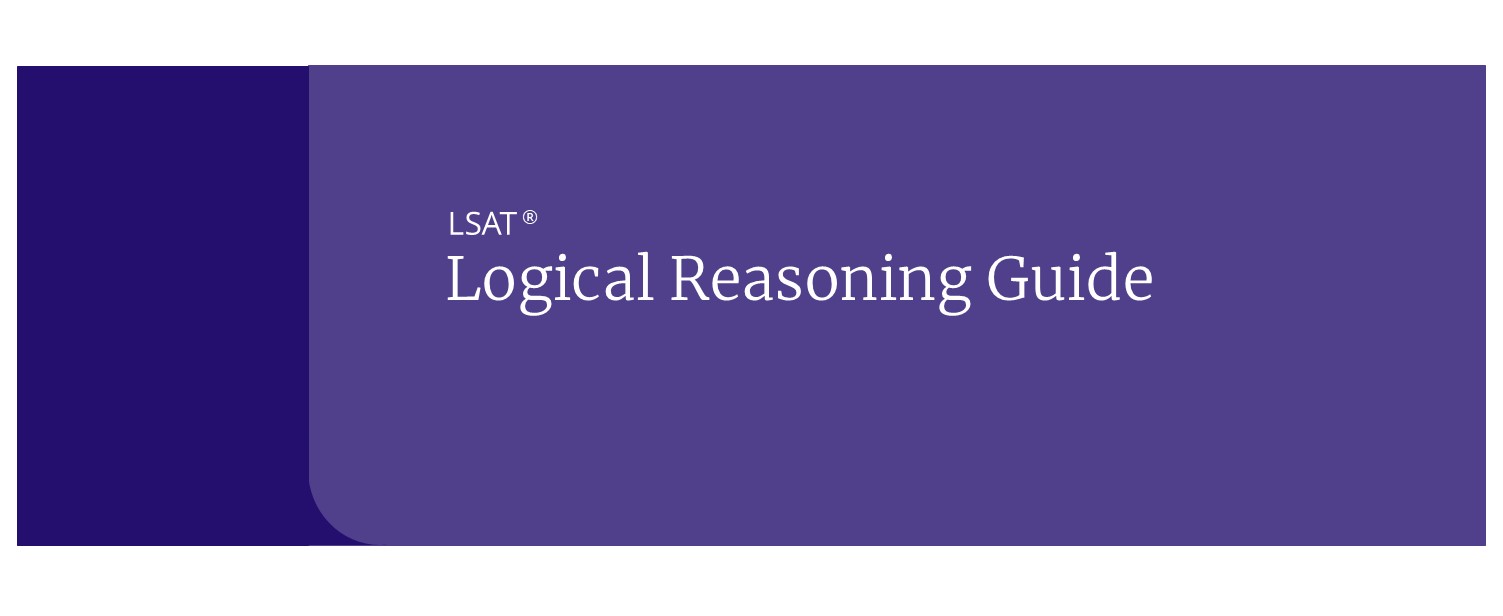LSAT Study Guide: Prep with Limited Time
While we recommend spending at least a month studying for the LSAT, we understand that’s not possible for everyone. If you’re down to your last week before the LSAT and you still have a significant amount of studying to do, check out our limited-time LSAT study plan and last-minute LSAT tips below.
How to Study for the LSAT
As you begin your LSAT preparation, you need to have a plan in place for your individual practice. Focus on learning the methods used to answer questions, speed, and stamina. If you’re wondering how to do that, here it is in a nutshell.
Break Down Your LSAT Studying
There are various kinds of questions on the LSAT so you should focus on learning the best methods for answering each type of question. Then practice those methods until you understand how to use them to find the correct answers.
Build Your LSAT Studies Back Up
Now you can think about speed. Start practicing on timed 35-minute sections. After you finish a section, review it while it’s still fresh in your mind. Focus on understanding not only why the correct answers are correct, but also what makes the wrong answers wrong.
Do Not Rush Your LSAT Studies
At this point, you should start building the stamina to stay still and focused for a total of six 35-minute sections. Practice taking the test in a quiet environment, with a desk and a chair. After taking the test, don’t review it right away. Give yourself time to recover, and spread your review out.
With this outline, you should be well on your way to LSAT success.
If you’re crunched for time, see the following tips, materials and schedules below for how to study for the LSAT with limited time.
Top Tips for LSAT Prep with Limited Time
LSAT Study Tip #1: Practice the LSAT (Do Not Cram)
With at least some of your college courses, you could overcome procrastination by cramming, finding out what you needed to know for the final and dedicating the whole day (and probably night) before the test to drilling it into your short-term memory. As long as you could recall the salient facts during the exam, you were good to go. But this won’t be the case on the LSAT because, quite simply, there’s nothing to memorize.
The LSAT rewards the application of law school skills such as incisive, critical reading and logical reasoning to a range of subject matter so wide there’s no way you’ll be familiar with all (or even most) of it. This is a test of what you’re able to do, not of how much you know. Realizing this changes everything. You can no more hope to master the LSAT by passively learning about it than you could hope to master the guitar by reading a book.
Make sure the course or materials you use have a lot of real LSAT questions, sections, or tests to work with. Just as importantly, make sure all of the questions and tests have clear, complete explanations so that you can review everything you get right and wrong. Getting into the batting cages and swinging away will help you become better at hitting a baseball, but you’ll make much faster and more reliable improvement if you have a coach there who can explain what you’re doing differently between the swings that made solid contact and those that miss.
LSAT Study Tip #2: Discover Your Starting Point
Right now, or at least as soon as you’ve finished reading this post, find the next available time to take a complete practice LSAT. You’ll need about three and half hours to take a full-length, timed test. But once you do, you’ll have a much clearer picture of your strengths and weaknesses, and of what LSAT questions are all about. Again, having explanations available for all of the questions is an enormous plus. In some cases, you’ll realize that you simply misunderstood what the question was calling for. In other cases, you’ll realize that you selected a correct answer, but could have done so much more efficiently by recognizing a pattern or process that the testmaker uses over and over.
LSAT Study Tip #3: Keep Your Prep Balanced
The LSAT always contains three scored sections: two sections of Logical Reasoning (~25 questions each), one of Reading Comprehension (~27 questions). Many test takers will discover that they’re weaker in one of those sections and try to improve their score by focusing exclusively on this one area of opportunity. The fact is that all questions are scored equally and adding four right answers to your strongest section will help your score just as much as adding four right answers to your weakest one. The sample study schedule below takes this into account.
LSAT Study Tip #4: Avoid Concern About That “One Weird Question”
For those of us who follow the LSAT, every test administration seems to produce one or two outstandingly difficult or unique-looking questions. We’ll argue about how best to crack these tough little puzzles and where they fit within the standard taxonomy of question types. Some self-styled LSAT gurus will even try to make their reputation by showing off a trick or two for the weirdest examples. But in reality, these outliers have a small impact on your score, especially when compared to the standard questions that show up in large numbers on every administration of the test.
Someone like you, practicing with limited time before test day is far better served by gaining confident mastery of Assumption, Strengthen/Weaken, and Inference questions, and the standard Reading Comp passages and questions than by seeking out obscure question types, even if those oddballs seem like the hardest problems to solve. You need a teacher or material that knows the test inside out and can guide you to the most valuable question types so that your practice is guaranteed to turn into points on your official LSAT.
LSAT Study Tip #5: Target Efficiency, Not Speed
There is no denying that timing is the greatest challenge the LSAT presents for an enormous number of students. You will, at some point in your practice, say “I could get every one of these if I just had more time.” (If you doubt me, just come back and read this again after you’ve taken a couple of tests.) In response, most test takers try to read faster or cut corners in their analysis. This is a big mistake. Most of the wasted time on the LSAT actually comes from rereading and second guessing.
Test takers who are patient (and practiced) enough to read an argument one time, analyze it, and predict the correct answer before testing the choices will easily outperform someone who tears through the argument, but has to reread it as they consider choice (A), and then (B), and then (C), and then (D), and so on. Gaining mastery and confidence will make you more efficient, and in the end, allow you to outperform haphazard test takers who are trying to simply work faster, not smarter.
Common Last-Minute LSAT Prep Mistakes: The Week Before LSAT Test Day
What to Study the Week Before the LSAT
Your goal during the week before the LSAT is to set yourself up for success on Test Day. Up until this point, you have been working to build your LSAT potential, but Test Day is about achievement.
Tips for Planning Your Remaining Study Time
- Balance stress management and study.
- Study areas of greatest strength, not only areas of greatest opportunity.
- The majority of your work should be under timed conditions—either Timing or Endurance.
- Still review the Answers and Explanations for every practice problem.
- Remember that you are going to law school.
What to Do Leading Up to the LSAT
- Get your body on schedule for the time of the test, and do LSAT questions at that same time of day.
- Eat, sleep, and exercise.
- If testing in-person, know where your test site is; check on public transportation schedule, directions, parking, etc.
- Be sure you have a valid picture ID and your LawHub username and password.
- Check www.lsac.org for the most recent Test Day guidelines.
- Decide whether you want to take the test or withdraw.
Sample LSAT Study Guide: Prep with Limited Time
Here’s a sample, daily schedule for someone practicing for the LSAT with limited time. It assumes that you have between two and three hours per day to spend on LSAT practice. You can adjust the schedule to account for your own availability, but follow the balance of practice activities and note the section-specific focus for different days of the week. Following this plan over your final weeks before taking the LSAT will help you improve your score as much as possible between now and then:
- Sunday: Take a full-length LSAT (min. 1-2 hours for the scored sections and a ten minute break; Add 1 hour 10 minutes to take a full test with an experimental section and Writing Sample)
- Monday: Review the first Logical Reasoning section from your Sunday test (30 to 60 minutes) AND practice 25-35 Logical Reasoning questions (two hours)
- Tuesday: Review the second Logical Reasoning section from your Sunday test (30 to 60 minutes) AND practice 25-35 Logical Reasoning questions (two hours)
- Wednesday: Do timed sections from a released LSAT (35 minutes each) and review the explanations (30 to 60 minutes per section)
- Thursday: Review your timing and strategy from your Sunday test (30 to 60 minutes) and practice 25-35 Logical Reasoning questions (two hours)
- Friday: Review the Reading Comprehension section from your Sunday test (30 to 60 minutes) AND practice 4-6 Reading Comp passages (two hours)
- Saturday: Leave one day per week LSAT free to relax and recharge. Make sure to rest the day before your official LSAT, too.
The day before the LSAT is as important as the six days before it. The first instinct of most test takers is to cram as much as possible in hopes of grabbing a few last-second points. But the LSAT isn’t a test that can be crammed for. You should think of Test Day as game day. Make sure you can hit your potential when it counts. Relax the day before the test so that you can hit your peak performance when it matters most.
With limited time until test day, making and sticking to the practice schedule (or your personal variation on it) is essential. Many test takers who see that their time is running out try to cram in a flurry of tests, without reviewing them or learning why they are getting some questions right, but consistently missing others. Others succumb to panic, throw up their hands, and “wing it” on test day. You have the opportunity to beat both groups and make solid, repeatable improvements in your score. But act now. Take advantage of Kaplan’s LSAT expertise and become the author of your own LSAT success story.
[ KEEP READING: What’s a good LSAT score? ]
FREE PREMIUM CONTENT
LSAT Score Predictor Quiz
Unlock the answers and explanations to all 12 questions from our score predictor.




